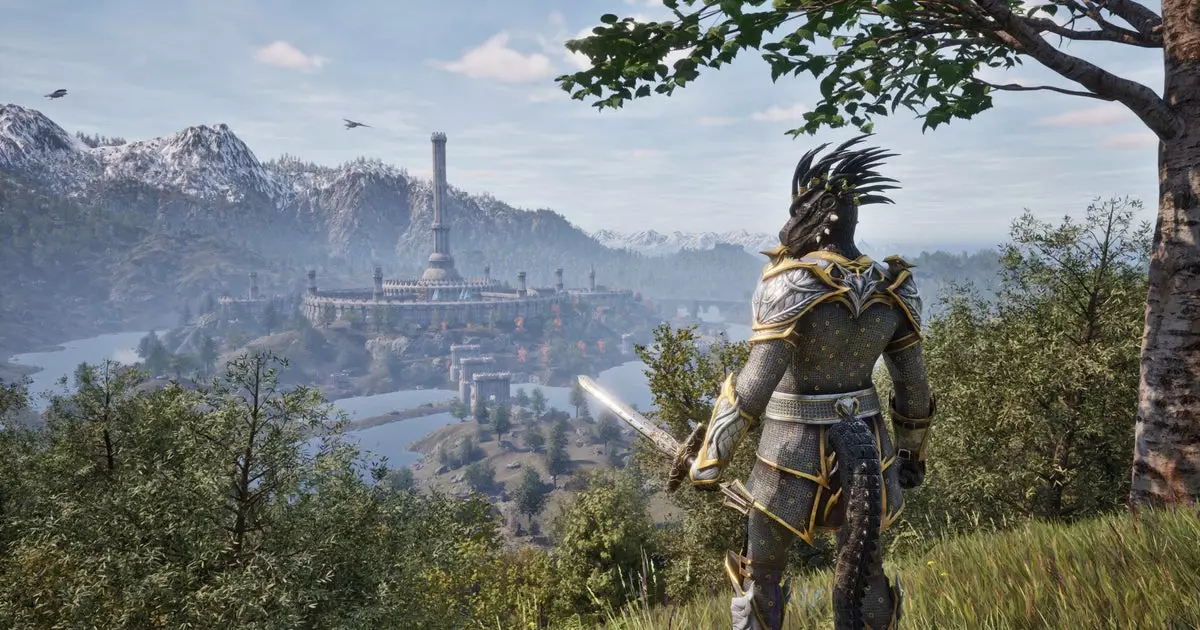The gaming landscape has always thrived on the innovative spirit of its communities, and the recent launch of *The Elder Scrolls IV: Oblivion Remastered* is no exception. Despite the absence of formal mod support, the modding community wasted no time diving into the depths of this updated version of a classic RPG, demonstrating a relentless passion for creative expression. Less than a day post-launch, more than 90 mods had already emerged, signifying an impressive and immediate response that showcases the dedication of fans and creators alike. This rapid onset of modifications speaks volumes about the enduring allure of the Elder Scrolls universe and the shared commitment to enhancing gameplay through custom content.
Bridging Old and New: Mod Compatibility
One of the most fascinating aspects of this remaster has been the surprising compatibility of older mods from the original *Oblivion*. A notable example disclosed on Reddit illustrates this point remarkably well. A player resurrected a simple 2008 mod that added late-game armor into their starting cell, only to discover it functioned seamlessly in the remastered edition—after a little adjustment in the files, of course. This ability to harmonize nostalgia with modern enhancements enriches the player experience. Yet, it also sets the stage for a tantalizing scavenger hunt for modders, as they sift through layers of old content to resurrect compatible mods. This not only amplifies the game’s longevity but also invokes a profound sense of community as enthusiasts connect over shared experiences.
The Dynamic Nature of Modding Experimentation
While many old mods work, not all transitions will proceed smoothly. The distinction between manageable model swaps and more sophisticated alterations must be made as modders grapple with the complexities of the Unreal Engine. Such experimentation serves as a reminder of the inherent challenges of modding—a creative endeavor filled with trial, error, and the occasional triumph. However, beyond merely recreating old favorites, the impetus to innovate persists. Some modders are already delving into visual overhauls, like enhancing color saturation, while others are altering core mechanics, such as weapon repair. This ongoing evolution suggests that the community is not merely working in the past; they are inventively sculpting a new experience from its rich history.
Evolving Gameplay Mechanics: A Double-Edged Sword
Among the myriad modifications, one that stands out raises eyebrows: the elimination of carry weight restrictions. This change, while arguably convenient, undermines one of the core elements that defines the Elder Scrolls series. The arduous task of managing inventory and the plentiful moments of ditching surplus arrows alongside a dusty road were central to the original game’s charm. It invokes nostalgia for many players, and the idea of discarding this aspect feels somewhat sacrilegious. However, this alteration reflects a broader trend in gaming—a push toward convenience and user-friendly designs. As modders strive to balance tradition with modern sensibilities, the question of what makes an Elder Scrolls game remains poignant.
The Exciting Yet Risky Terrain of Modding for the Remaster
The remaster has completely reimagined certain elements, like user interfaces and character mechanics, advancing gameplay far beyond the original design. Enhanced graphics and new sound effects breathe life into familiar landscapes, while tweaks to the leveling system attempt to mitigate frustrations experienced by veteran players. These changes, while celebrated, also provoke trepidation—will modders revert to controversial mechanics, such as level scaling? With the community poised on this precipice, the potential for heated debates and deliciously intricate mod discussions is bound to ignite passion among fans.
The modding scene of *Oblivion Remastered* stands at an exhilarating juncture, characterized by creativity, innovation, and nostalgia. The fervor with which modders are approaching the remaster highlights not only their resourcefulness but also the enduring legacy of *The Elder Scrolls IV*. This period is not merely about providing cosmetic upgrades; it is an explorative journey into the heart of what it means to passionately engage with beloved digital worlds. As modders continue to experiment, the potential for immersive experiences is boundless, and players brace for the spectacle of creativity yet to come.

